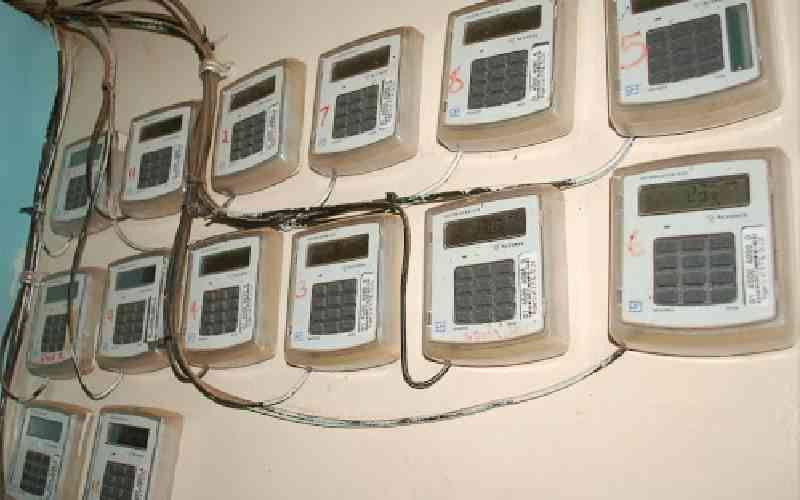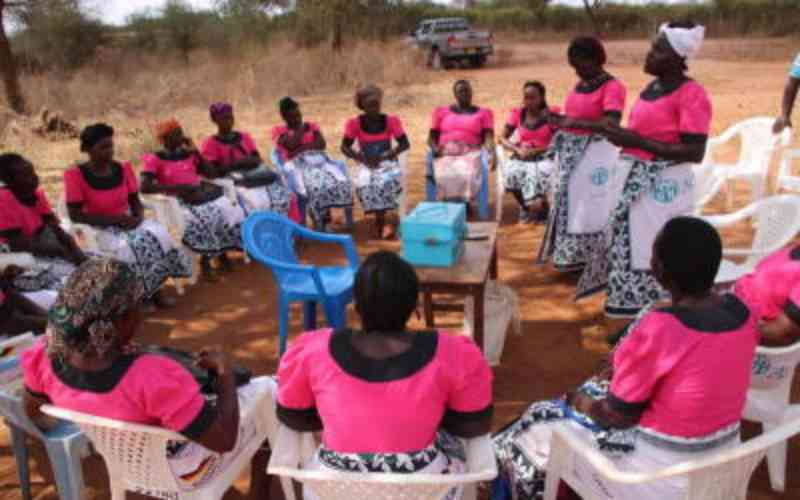Kenyans have been paying high bills to keep private power investors in the business, even for the long periods that they do not supply a single unit of electricity to Kenya power.
This has been due to skewed Power Purchase Agreements (PPAs) signed with the utility firm, which ensures companies are guaranteed payments even when their machines are idle, in what is referred to as capacity charges.
This, however, could be coming to an end as the Ministry of Energy mulls terminating the contracts, following the decline in demand for power due to slowdown in uptake of electricity by Kenyan businesses, after measures were put in place to contain coronavirus pandemic.
If successful, it will be a victory for the Ministry that has tried to kick out the costly power producers in the past, even enduring a presidential tongue lashing and questioning how the country got itself into such skewed contracts.
Kenya Power has served the Independent Power Producers (IPPs) with Force Majeure notices, notifying the companies it will not be able to buy power from them as agreed in the PPAs owing to drop in consumption.
The clause is usually included in contracts to remove liability for natural and unavoidable catastrophes.
Indeed, there has been a major decline in power consumption following measures such as the dawn to dusk curfew (which was in May extended to cover the hours between 9pm and 4am) as well as the cessation of movement from and into such counties as Nairobi and Mombasa.
This resulted in the Kenyans consuming 645 million kilowatt-hours (kWh) or units of electricity in April, compared to 761 million units in March.
Power outages
In April, the different power producers had produced and sold to Kenyan Power 849 million kWh, which means that the power retailer was left with 204 million units that it could not sell to its customers.
However, power outages have persisted across the country.
At a rate of Sh22 per unit, this could translate to over Sh4 billion that went to waste. In the notices, Kenya Power said it would reduce the amount of electricity it buys from each of the IPPs.
The power suppliers have however criticised the utility firm, noting that the challenges of excess power supply have little to do with pandemic as alleged but other underlying factors.
These include the continued signing up of new power producers, which have led to an increase in the amount of electricity available, even when it has been clear that demand for power has not gone up.
“Whereas Covid-19 pandemic may have had a marginal effect on the demand for electricity in Kenya, the available data demonstrates that KPLC’s poorly planned procurement had resulted in a massive oversupply of electricity prior the Covid-19 pandemic,” said the IPPs in a joint plea to the Energy ministry, asking it to intervene and arbitrate between them and Kenya Power.
Stay informed. Subscribe to our newsletter
“We conclude that whether or not any effect that Covid-19 pandemic has had on the national demand for electricity to force majeure under the PPAs, KPLC (Kenya Power) remains able to take power and, as a result, KPLC does not have the unilateral right to adjust contracted capacity or the capacity payments under the PPA.”
It adds that the power retailer is using “Covid-19 as an excuse to avoid its obligations under the PPAs to reduce the level of capacity payments that it is required to make under the PPAs. This constitutes an abuse of the Force Majeure provisions under the PPAs.”
And in the capacity payments, perhaps lays the problem. The PPAs between Kenya Power and the electricity producers require the power firm – and by extension the consumers – to pay the producers even when they do not supply even a unit of electricity.
The capacity charge paid to the producers varies depending on the PPAs they have with Kenya Power but in a year where it supplied no power to the electricity retailer, it can account for 100 per cent of its revenues.
For instance, in 2018, according to the latest available Kenya Power’s annual report, the least paid thermal producer took home Sh1.93 billion for 28 gigawatt-hours (GWh), or 28 million kWh.
Kenya Power buys electricity from producers at a wholesale rate before it is loaded with other costs such as fuel costs, forex adjustment and levies to other power utilities.
Using the current retail rate of Sh22 per unit of power, the least paid power producer would have been paid Sh616 million for the 28 million units, with the balance of over Sh1.3 billion being capacity payments.
Also, many of the IPPs operate thermal power plants, which use heavy fuel oil to generate power. The cost of acquiring the fuel is passed to consumers and usually have the effect of substantially pushing up the cost of power.
These plants are usually used to plug in the shortfall in power production, for instances, during times of drought when the generating capacity from hydropower declines.
According to Kenya Power’s annual report for 2018, it paid the thermal producers Sh23 billion in what is billed as fuel costs.
Whether Covid-19’s impact on the economy gives the Government an excuse to terminate the contracts or not, the Government may have found way to wiggle out of the contracts that are heavily skewed in favour of the power producers.
It is among the many areas where the country’s negotiating skills have fallen short with Kenyan ending up paying dearly.
Power sector analysts say some State officials could have signed lopsided deals in return for lucrative deals.
Kenya started relying on IPPs in 2001 for emergency power to avoid power shortages owing to lengthy dry spells that resulted in low output from hydropower dams.
So far, thermal power producers have been the stain on Kenya’s energy mix that is dominated by renewable energy sources.
So problematic has been the thermal power producers that in 2016, President Uhuru Kenyatta ordered an audit on the plants and their power purchase agreement with Kenya Power.
This was with a view of terminating PPAs that were deemed too costly for Kenyans, with the overall aim of bringing down the cost of energy.
The President then noted that “there has been a lot of cloud around signing agreements with IPPs that has cost the country heavily… those arrangements that are not cost-effective to Kenyans must be terminated – in a legal way – in the shortest time possible”.
A committee to look into the contracts was formed shortly afterwards by the Ministry of Energy.
However, it reported back that it would be too expensive to get out of these contracts.
The only cost-effective option that the country had was to wait for the contracts with the power producers to lapse – a seeming victory for the power producers, whose contracts have a life span of between 20 and 25 years.
Some of the contracts extend to beyond the year 2030, which would mean that Kenyans will continue grappling with the capacity charges for the thermal plants as well as contend with fuel cost charges on their bills for more than a decade.
According to a 2019 World Bank report, the Government motivation to review the PPAs may have been out of among the millions of households that now appreciate that thermal power plants play a major part in pushing up their power balls.
“This directive followed from a growing perception that the cost of energy from thermal plants, and particularly from IPPs, had risen too high, and from lobbying by interested developers of renewable energy projects,” said the World Bank in an April 2019 report on the power sector reforms in the country.
“With the Government very sensitive to increases in retail tariffs and the country facing the prospect of excess capacity as some delayed IPPs come online.”
In the recent past, there has been a decline in thermal power producer’s installed capacity.
This is as a result of a lapse in PPAs that have not been renewed.
The installed capacity of power plants using thermal has reduced to 749 megawatts (MW) as of December 2019, according to the Economic Survey 2020. This is from a high of 833MW in 2015.
While thermal power production capacity is on the decline, there are parts of the country that will continue to rely on the expensive power producers.
Regions such as counties in the northeastern are yet to be connected to the national electricity grid owing to inadequacy in the power transmission infrastructure, which leave them with little options but thermal plants.
[email protected]
 The Standard Group Plc is a
multi-media organization with investments in media platforms spanning newspaper
print operations, television, radio broadcasting, digital and online services. The
Standard Group is recognized as a leading multi-media house in Kenya with a key
influence in matters of national and international interest.
The Standard Group Plc is a
multi-media organization with investments in media platforms spanning newspaper
print operations, television, radio broadcasting, digital and online services. The
Standard Group is recognized as a leading multi-media house in Kenya with a key
influence in matters of national and international interest.
 The Standard Group Plc is a
multi-media organization with investments in media platforms spanning newspaper
print operations, television, radio broadcasting, digital and online services. The
Standard Group is recognized as a leading multi-media house in Kenya with a key
influence in matters of national and international interest.
The Standard Group Plc is a
multi-media organization with investments in media platforms spanning newspaper
print operations, television, radio broadcasting, digital and online services. The
Standard Group is recognized as a leading multi-media house in Kenya with a key
influence in matters of national and international interest.








